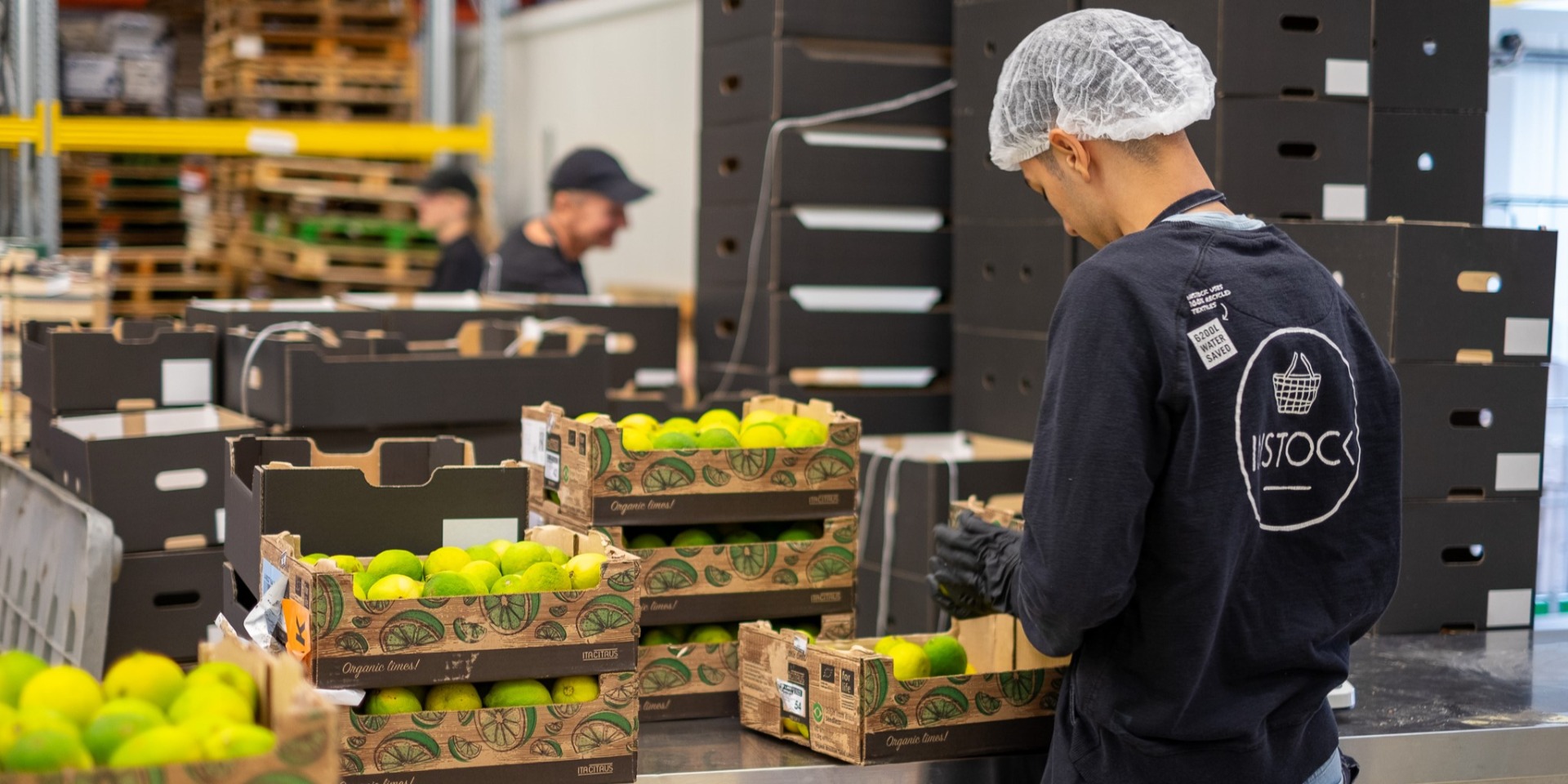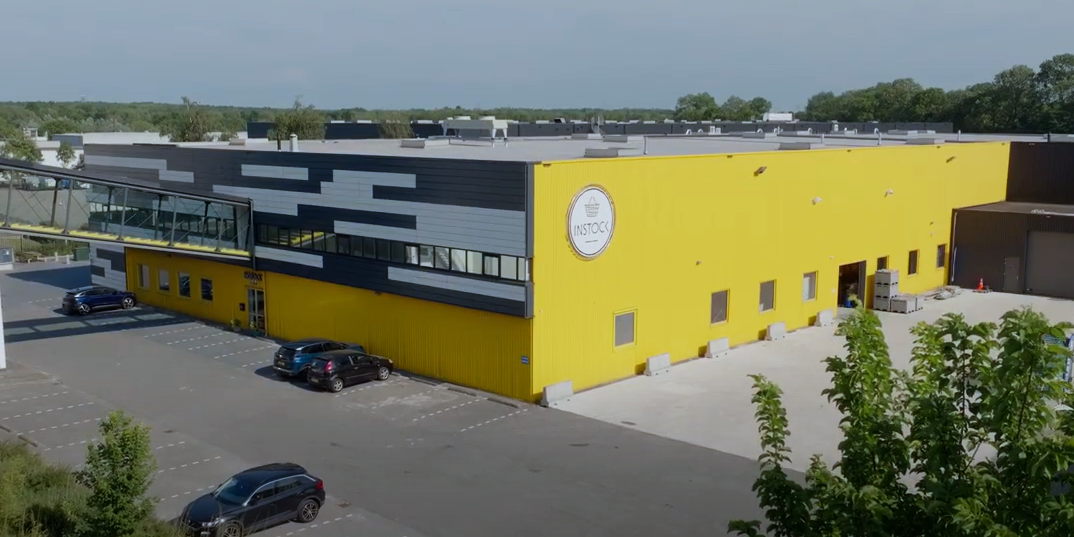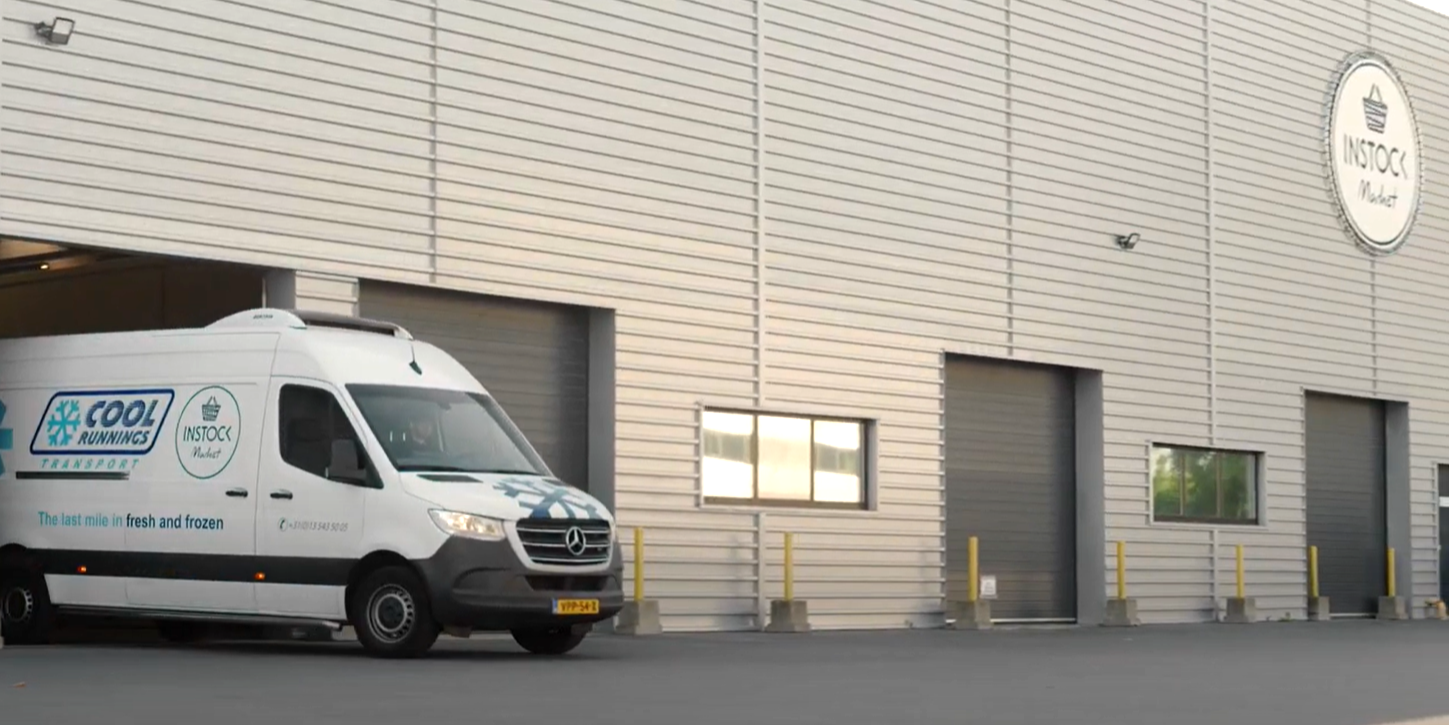
Fighting food waste: a Look inside InstockMarket’s Food Rescue Center
At InstockMarket, we have a mission: to reduce food waste. Our Food Rescue Center plays a crucial role in this effort. But what exactly is it, and how does it work? In this blog, we’ll take you behind the scenes of our Food Rescue Center and show you how we give surplus food a second life together.
What is the Food Rescue Center?
As the name suggests, the Food Rescue Center is a place where food is rescued. Located in Diemen, it spans around 1700 square meters. The Food Rescue Center, also known as the FRC, is the home of InstockMarket. It’s a large warehouse with both production and storage space. Additionally, it houses the office where the InstockMarket team works to save as much food from waste as possible.


What happens in the Food Rescue Center?
In our Food Rescue Center, we rescue surplus food every day. These are products that would otherwise go to waste, such as fruits and vegetables with cosmetic imperfections or excess produce due to a large harvest. Together with over 200 farmers, growers, and traders, we make sure that these products don’t go to waste. They choose to deliver their surplus to us rather than throw it away. After all, food waste is a shame—it takes a lot of energy, water, land, and care to produce these products.
Want to learn more about the impact of food waste ? Read more here →
Collecting surplus food
Our logistics partner picks up surplus food from all registered addresses. Around 7 a.m., the products arrive at our center and are placed in the sluice. The sluice is the intermediary space between the outside environment and the inside of the Food Rescue Center. This area ensures that the products stay cool and dust-free until they are sorted.
Careful inspection and processing
Our morning shift Food Rescuers, also known as packers, take care of the products. They carefully inspect everything for quality according to FSSC 22000 standards. This means that we comply with international food safety and quality management standards. Our certification ensures that we follow safe and reliable processes.
In addition to the inspection, the packers repack the products. They package the items in the right quantities, making them immediately ready for our customers in the hospitality sector. Damaged or spoiled products are responsibly discarded.


Storage and sales
After quality control and repacking, the products are carefully stored. Depending on the type of food, we place them in our cold storage or freezer with a CO2 refrigeration system (more about this below) or in the uncooled area. Then, we list the products on InstockMarket.nl so that professional chefs can order them.
What is a CO2 refrigeration system?
A CO2 refrigeration system is an energy-efficient and environmentally friendly cooling system. Instead of traditional refrigerants, it uses carbon dioxide (CO2), which is much less harmful to the environment. CO2 has a low Global Warming Potential (GWP), meaning it contributes less to global warming. This makes it a good choice for businesses that want to reduce their environmental impact. The system is also highly efficient, especially at low temperatures, helping save energy. Moreover, it works well even in high ambient heat, which is important for food preservation. InstockMarket is continuously looking for sustainable solutions in its processes.
Orders and deliveries
When a customer places an order, we get to work immediately. Our afternoon shift Food Rescuers, the order pickers, check all the orders and collect the necessary products. Then, our logistics partner, Cool Runnings, takes over. They schedule the most efficient delivery route. In most cases, the rule is: orders placed before 4:30 p.m. are delivered the next working day.


Smart software for efficiency and impact insights
In our Food Rescue Center, we use smart software to ensure that all processes run smoothly. Since we receive products from many different suppliers, the process is more complex than a typical wholesale operation. Our custom software helps us store important product information, such as quantity, origin, shelf life, and impact. Each product batch receives a unique number so we can always trace its origin.
The software also calculates the environmental impact of each product, such as CO2 emissions and the land and water used in its production. This shows the positive impact of rescuing these products instead of throwing them away. This information is added to the product data, allowing us to share it easily with our suppliers and customers. This way, we can communicate not only the value of the product but also the positive impact of rescuing it.
We are constantly developing the software with the data we collect. In the future, we hope to make predictions about potential food waste, so we can prevent it.
Have questions about our Food Rescue Center or want to learn how you can make an impact? As a customer, supplier, or partner, you’re always welcome to take a look inside our Food Rescue Center. Simply make an appointment with your contact person, and discover how we can make a difference together. We look forward to working with you to fight food waste!
